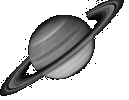|
Both the LX200GPS and the NexStar are great scopes.
Anyone who owns either faced the same decision.
I chose the LX200GPS for these reasons:
(1) Fastar is an option if you want to use the scope exclusively for CCD imaging. Removing the secondary for CCD and then replacing it for visual use is possible but most people find it impractical.
(2) The firmware for the LX200GPS is easily updated over the Web. You download an upload, attach a serial cable to the scope, and upload the new firmware. Not possible with the NexStar. You have to send in your handpad to Celestron, which is inconvenient and costly.
(3) If you're interested in astrophotography, check and see what SCTs people are using. A few use older Celestron scopes, like the C14. Lots use the LX200 or LX200GPS. Why? Better implementation of PEC, better wedge, better tracking.
(4) Greater GOTO precision. GPS is more a marketing feature for both scopes than essential. GOTO is very useful. Especially for dim DSOs, etc. The GOTO accuracy on the LX200GPS is much more accurate than the NexStar. It will even do GOTO to features on the moon (something difficult to do -- the moon, Venus, and Mercury are the hardest items for GOTO).
(5) Software control. If you ever decide to control the computer from a laptop or a PocketPC, the LX200 command set is a standard.
If you go with the LX200GPS, you should order the UHTC optics. Independent tests have validated the claims by Meade. It does improve reflectivity and reduce dispersion, resulting in improved light gathering. So, factor in the cost for UHTC optics.
Also, don't forget accessories. The diagonal that comes with either the Meade or Celestron scopes is rinky dink. Get a high quality mirror diagonal and some high quality EPs. They will give you a difference in visual quality that is extraordinary.
I hope I helped some.
Mitch
Glenn E. Mitchell II, Ph.D. (aka Mitch)
10" f/10 Meade LX-200 GPS (Big Blue) s/n 01088
Supercharged at ASO by Dr. Clay Sherrod, # 2314-2010
N 30° 30' 49.2" / W 084° 20' 13.8"
|



